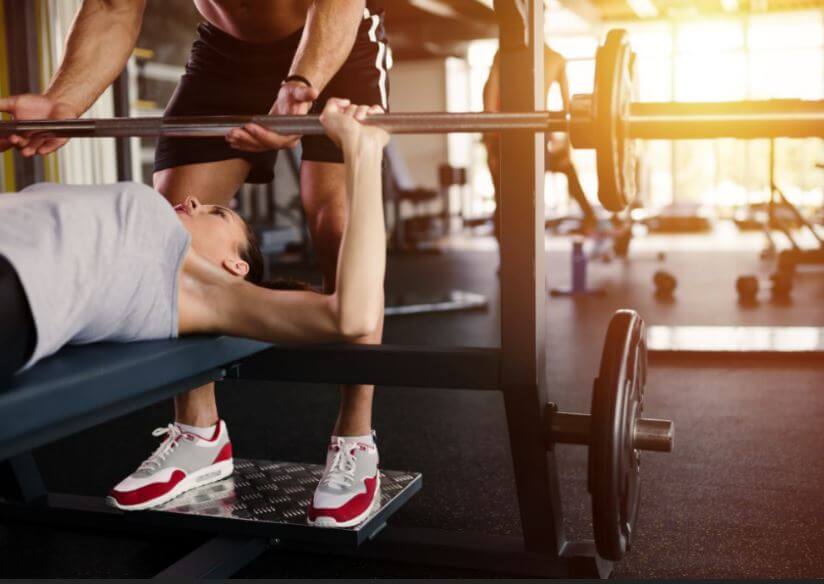Get Bigger Muscles to Generate More Strength

Your body adapts to training by becoming stronger. When it comes to strength, muscle size really matters. In fact, muscle training actively increases strength. Therefore, in this article, we’ll share how to get bigger muscles to generate more strength.
The first thing you should know is that strength training increases the size and quantity of muscle fibers. This process is known as hypertrophy, and it results in bigger and stronger muscles.
In fact, the size and strength of muscles are as a result of strength training through the process of hypertrophy. If you perform strength training, you’ll definitely see improvements in your performance. This however, will depend on various aspects such as the muscle worked and the type and quality of exercise performed.
If you have been lifting weights, you’ll build muscle faster if you concentrate on large muscle groups such as the chest, back, and legs. That’s why we recommend adding exercises such as squats, deadlifts, push-ups, bench presses or jumps to your workout routine as efficiently as possible.
Strength training
This capacity is developed by raising low repetition ranges, ideally from one to five repetitions. This will force the body to adapt to the stimulus that’s provided through training.
During low range repetitions, the body finds a way to recruit muscle fibers efficiently. This, in the long terms, makes muscles stronger.
Due to the heavier loads lifted, the body will need longer rest periods in order to complete the same number of repetitions. Longer rest periods will also do wonders for your ability to concentrate and it’ll fortify mental strength.

Strength training depends to a large extent on the use of progressive loads. This means that every time you successfully reach the desired repetition range, you should increase the load carried in order to continue progressing.
Keep in mind that when you perform strength training exercises, you should increase your rest periods to approximately 2 to 5 minutes, depending on the exercise performed.
Another way to increase muscle gain is to reduce cardiovascular exercises. If you run every day, it’ll be difficult for you to gain weight. Therefore, perform your aerobic stimulation exercises during days when you’re not in the gym.
Strength: get bigger muscles with these three tips
There are three fundamental rules for athletes who want to get bigger muscles:
Weight lifting
First of all, lifting weights stimulates damage of muscle fibers, this causes the body to respond with muscle growth. Essentially, you must teach your body that it can lift heavier and heavier weights on a regular basis. Your body will respond with more muscle to handle the load.
Increase calorie intake
Next, keep in mind that in order to promote muscle growth, you need to consume an excess of calories. In other words, you’ll have to consume enough calories to maintain your current body weight, but also to provide energy for new muscle growth.

Rest for strength
Your muscles grow when you’re resting, not when you’re exercising. Contrary to what you may believe, you don’t get bigger at the gym. All that occurs at the gym is damage of the muscle fibers that the body needs to respond to. The key period when it comes to muscle growth occurs while resting.
Avoid training excessively. In order to do so, listen to your body and rest when you know you need to, even if your training program says otherwise.
Among other things, overtraining can involve taxing muscles, the central nervous system, joints and ligaments beyond their ability to effectively recover.
In conclusion, it’s important to note that, if you want to obtain bigger muscles to generate more strength, you’ll have to follow a regular training plan. Don’t forget that rest will also determine your progress.
Your body adapts to training by becoming stronger. When it comes to strength, muscle size really matters. In fact, muscle training actively increases strength. Therefore, in this article, we’ll share how to get bigger muscles to generate more strength.
The first thing you should know is that strength training increases the size and quantity of muscle fibers. This process is known as hypertrophy, and it results in bigger and stronger muscles.
In fact, the size and strength of muscles are as a result of strength training through the process of hypertrophy. If you perform strength training, you’ll definitely see improvements in your performance. This however, will depend on various aspects such as the muscle worked and the type and quality of exercise performed.
If you have been lifting weights, you’ll build muscle faster if you concentrate on large muscle groups such as the chest, back, and legs. That’s why we recommend adding exercises such as squats, deadlifts, push-ups, bench presses or jumps to your workout routine as efficiently as possible.
Strength training
This capacity is developed by raising low repetition ranges, ideally from one to five repetitions. This will force the body to adapt to the stimulus that’s provided through training.
During low range repetitions, the body finds a way to recruit muscle fibers efficiently. This, in the long terms, makes muscles stronger.
Due to the heavier loads lifted, the body will need longer rest periods in order to complete the same number of repetitions. Longer rest periods will also do wonders for your ability to concentrate and it’ll fortify mental strength.

Strength training depends to a large extent on the use of progressive loads. This means that every time you successfully reach the desired repetition range, you should increase the load carried in order to continue progressing.
Keep in mind that when you perform strength training exercises, you should increase your rest periods to approximately 2 to 5 minutes, depending on the exercise performed.
Another way to increase muscle gain is to reduce cardiovascular exercises. If you run every day, it’ll be difficult for you to gain weight. Therefore, perform your aerobic stimulation exercises during days when you’re not in the gym.
Strength: get bigger muscles with these three tips
There are three fundamental rules for athletes who want to get bigger muscles:
Weight lifting
First of all, lifting weights stimulates damage of muscle fibers, this causes the body to respond with muscle growth. Essentially, you must teach your body that it can lift heavier and heavier weights on a regular basis. Your body will respond with more muscle to handle the load.
Increase calorie intake
Next, keep in mind that in order to promote muscle growth, you need to consume an excess of calories. In other words, you’ll have to consume enough calories to maintain your current body weight, but also to provide energy for new muscle growth.

Rest for strength
Your muscles grow when you’re resting, not when you’re exercising. Contrary to what you may believe, you don’t get bigger at the gym. All that occurs at the gym is damage of the muscle fibers that the body needs to respond to. The key period when it comes to muscle growth occurs while resting.
Avoid training excessively. In order to do so, listen to your body and rest when you know you need to, even if your training program says otherwise.
Among other things, overtraining can involve taxing muscles, the central nervous system, joints and ligaments beyond their ability to effectively recover.
In conclusion, it’s important to note that, if you want to obtain bigger muscles to generate more strength, you’ll have to follow a regular training plan. Don’t forget that rest will also determine your progress.
All cited sources were thoroughly reviewed by our team to ensure their quality, reliability, currency, and validity. The bibliography of this article was considered reliable and of academic or scientific accuracy.
- Fry, A. C. (2004). The role of resistance exercise intensity on muscle fibre adaptations. Sports Medicine. https://doi.org/10.2165/00007256-200434100-00004
- Schoenfeld, B. J. (2010, October). The mechanisms of muscle hypertrophy and their application to resistance training. Journal of Strength and Conditioning Research. https://doi.org/10.1519/JSC.0b013e3181e840f3
- Loenneke, J. P., Wilson, J. M., Marín, P. J., Zourdos, M. C., & Bemben, M. G. (2012). Low intensity blood flow restriction training: A meta-analysis. European Journal of Applied Physiology, 112(5), 1849–1859. https://doi.org/10.1007/s00421-011-2167-x
- Boutcher, S. H. (2011). High-intensity intermittent exercise and fat loss. Journal of Obesity. Hindawi Publishing Corporation. https://doi.org/10.1155/2011/868305
This text is provided for informational purposes only and does not replace consultation with a professional. If in doubt, consult your specialist.








